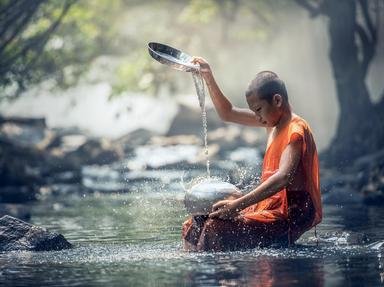
The Five 'Stans' of Central Asia Quiz
Each of these answers is associated with one of the five Central Asian countries nicknamed the 'Stans': Kazakhstan, Kyrgyzstan, Tajikistan, Turkmenistan and Uzbekistan. Your task is to sort the answers - mainly places, with the odd exception - by land.
A classification quiz
by Kankurette.
Estimated time: 3 mins.
- Home
- »
- Quizzes
- »
- Geography Trivia
- »
- Asia
- »
- Asia - Regions